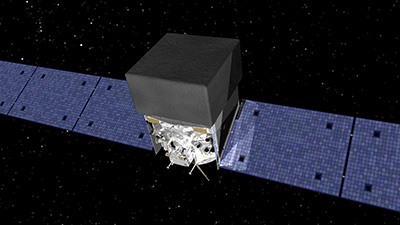Key Takeaways:
When the topic of black holes comes up, it’s often coupled with the term “massive.” But black holes also come in a less massive flavor: It’s been theorized that miniature “primordial black holes” left over from the universe’s formation could not only be found in Earth’s vicinity, but might also emit enough gamma rays for us to see them if they are.
A group of researchers from UC Santa Clara and the Erlangen Centre for Astroparticle Physics in Germany used NASA’s Fermi Gamma-ray Space Telescope to see if they could find traces of these small black holes near Earth. Christian Johnson, a graduate student in physics at UC Santa Cruz, created the algorithm that searches for gamma rays in Fermi’s Large Area Telescope data.
“Understanding how many primordial black holes are around today can help us understand the early universe better,” said Johnson in a press release.
Primordial black holes are thought to have formed during the Big Bang and have generally lower masses than their colossal counterparts, ranging from fractions of a pound to thousands of solar masses, depending on the model used. But most primordial black holes are believed to have masses so low, in fact, that their ability to hang on to their own mass weakens over time. According to the Hawking radiation theory, matter-antimatter particle pairs can spring into existence near the event horizon of a black hole. If the black hole absorbs only one particle while the other escapes, its mass and energy actually decrease over time. This process can cause tiny primordial black holes to essentially evaporate right out of existence over the current lifetime of the universe.
This process speeds up as the black hole continues to lose mass. Before it disappears, though, the increase in particles escaping the black hole (the “burn phase”) could result in gamma ray emission, causing it to increase in brightness. It’s believed that Fermi is capable of seeing these emissions (at least, from nearby black holes) and identifying a primordial black hole before it dissolves.
Unfortunately, the research team wasn’t able to detect any of these gamma rays during the study. However, the odds of identifying a primordial black hole in either its bright phase or its final explosion phase were pretty unlikely. For starters, the whole process happens rather quickly: A primordial black hole will go from indiscernible to exceptionally bright in a matter of years, and will then burn for a few more years before exploding. The observation period for the study was only about four years, so it would have been incredibly lucky to catch sight of the occurrence in that time. Another limitation is Fermi’s short viewing range for this process — it can’t distinguish primordial black holes from other gamma-ray sources too far beyond the vicinity of Earth.
In science, though, a failure can actually be considered a success. “Even though we didn’t detect any [primordial black holes], the non-detection sets a limit on the rate of explosions and gives us better constraints than previous research,” said Johnson.
The hunt for primordial black holes is one of ongoing importance. Finding evidence of their existence would not only give us insight into the early formation of the universe, but also serve as a tool for understanding the massive black holes that, unlike their mini counterparts, won’t be disappearing anytime soon.










